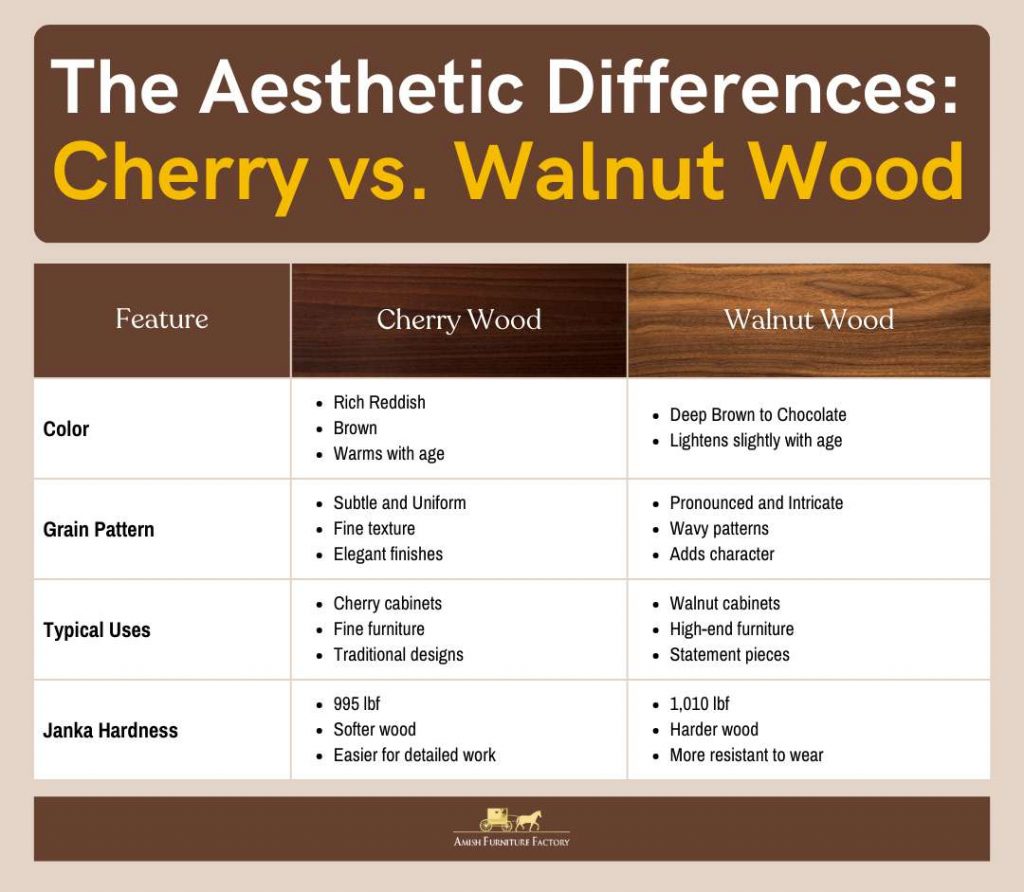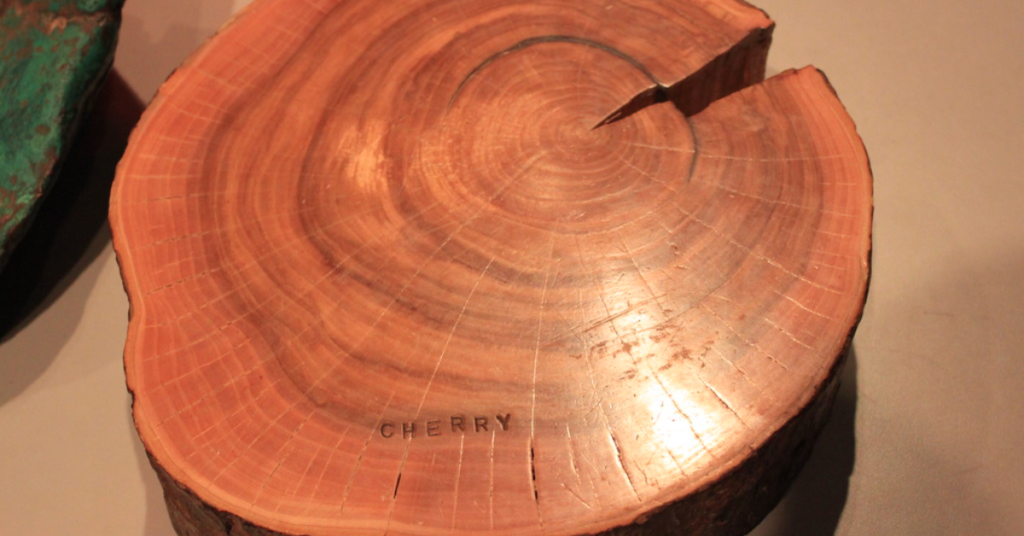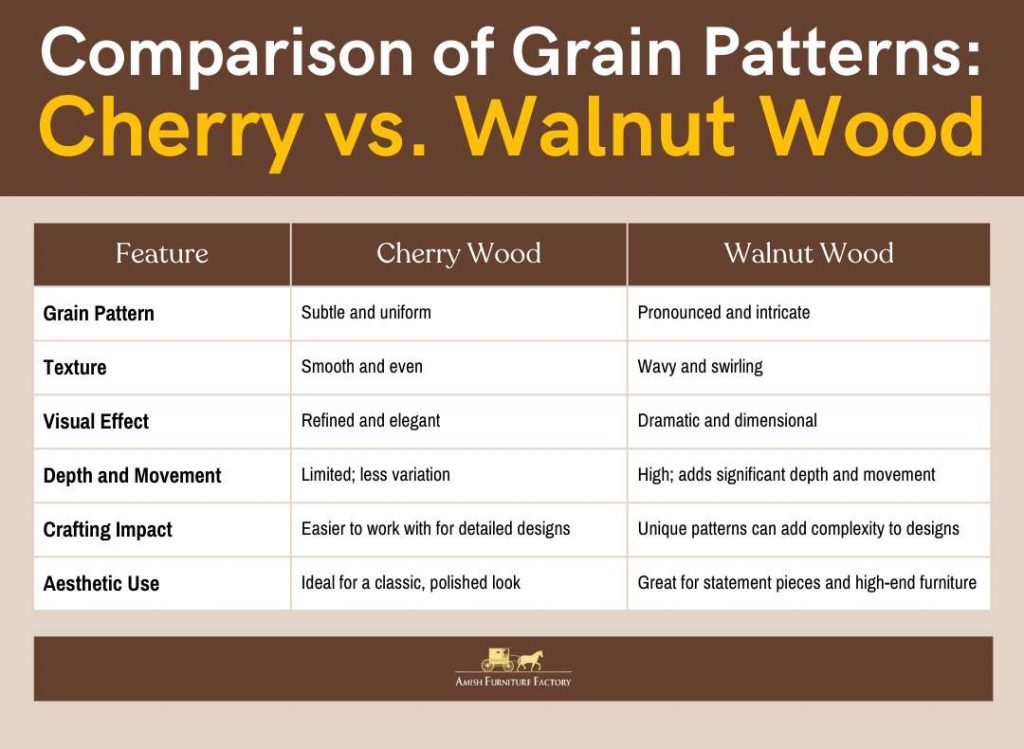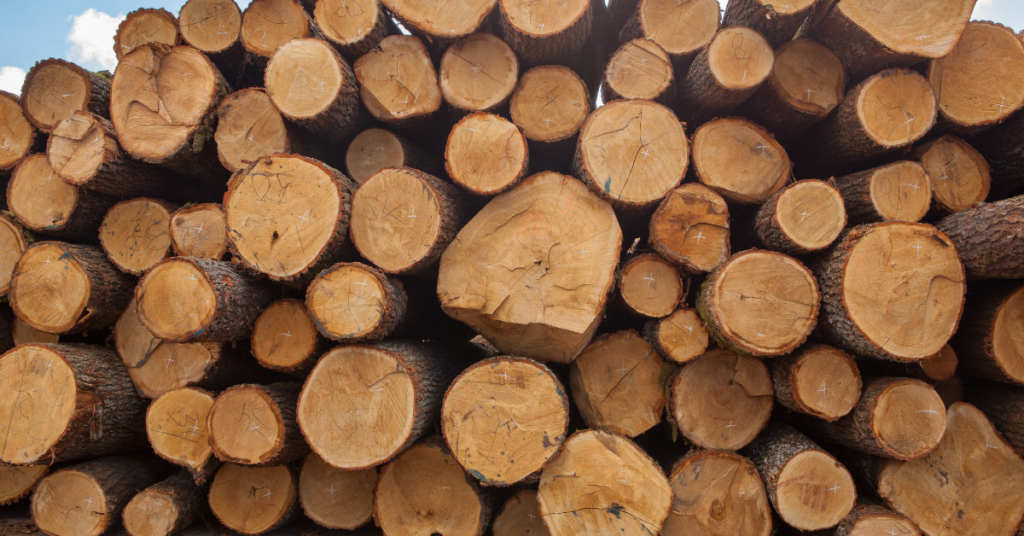
Selecting the right type of wood, such as cherry or walnut, is crucial because it impacts both the look and longevity of your furniture. Each wood type brings its own set of characteristics that affect durability, style, and how well the piece integrates into your space. By understanding the differences between the two, you can make an informed choice that ensures your furniture is not only aesthetically pleasing but also suited to your needs and preferences.
Key Takeaways:
- Cherry and walnut each bring distinct visual and functional qualities to furniture.
- Cherry is known for its warm, reddish-brown tones and smooth grain, while walnut offers deeper, darker hues and intricate grain patterns.
- Walnut is generally more durable and resistant to wear compared to cherry, making it a better choice for high-traffic furniture. Cherry, though softer, is still strong and well-suited for detailed craftsmanship.
This guide will walk you through the key differences between these two woods, helping you make an informed decision for your furniture project.
Cherry and Walnut Wood: A Closer Look
Black cherry wood is a prized material in the furniture industry, particularly within the United States. Its deep, rich reddish-brown hue grows even more intense as it ages, providing a sophisticated and inviting look. This wood is highly sought after for crafting high-quality furniture pieces, such as cherry cabinets, dining tables, and elegant cherry wood chairs. The uniform grain pattern of black cherry not only enhances the beauty of each piece but also contributes to its durability and strength, making it a favored choice for both traditional and contemporary furniture designs.
Walnut wood, on the other hand, is celebrated for its rich, dark tones and strong, smooth grain. Mainly from walnut trees and black walnut, this wood stands out in the furniture industry, particularly for crafting walnut cabinets and high-end furniture pieces. Its color ranges from dark chocolate to deep brown, offering a bold, luxurious appearance that’s hard to match.
Here’s a quick comparison of their key features:

Ready to choose the perfect wood for your furniture? Explore our stunning Amish cabinets crafted from cherry, walnut, and other premium hardwoods.
Comparing Durability and Strength

When choosing between cherry and walnut wood, understanding their durability and strength helps in making the right decision.
Cherry wood is softer, with a Janka hardness rating of 995 lbf. This rating means it’s more likely to dent and scratch. However, it holds up well indoors where it’s not exposed to harsh conditions.
Walnut is harder, with a Janka rating of 1,010 lbf. With such rating, it’s more resistant to damage and wear. This makes walnut a great option for furniture that gets a lot of use, like dining tables and cabinets.
When it comes to strength and longevity, walnut is denser and stronger. It’s better for larger, heavier furniture that needs to withstand more pressure and weight. Cherry, while not as hard as walnut, is still strong enough for detailed and finely crafted pieces where ease of workability is important.
Aesthetic Appeal and Design Versatility
Cherry wood has a warm reddish-brown color that becomes more beautiful as it ages. Its grain pattern is smooth and even, giving it a refined, elegant look. This makes cherry a great choice for classic, understated furniture.
Walnut offers a darker, richer color range, from deep brown to chocolate tones. Its grain is more detailed and wavy, adding distinctive character to pieces. Walnut’s bold appearance makes it ideal for standout furniture that catches the eye.
Both woods react differently to light. Cherry’s reddish tones are highlighted in natural light, while walnut’s dark shades create a striking contrast in bright spaces.
Here’s a table showing the grain patterns and visual effects of the two wood types:

Aging Process
Cherry wood darkens over time, developing a deeper reddish-brown hue that adds to its charm and sophistication. Walnut lightens a bit with age, shifting to a softer brown. This change enhances its versatility, making it adaptable to various styles while maintaining its elegant look.
Cost
Walnut, typically between $1,500 to $5,000 or more, is generally more expensive than cherry. This is because walnut is rarer, in higher demand, and harder to work with. Cherry wood, with prices ranging from $1,000 to $4,000, is somewhat more affordable due to its wider availability and easier handling, though it’s still considered a high-quality material.
The price of both woods can vary based on quality, source, and craftsmanship. Higher-grade walnut, with fewer imperfections and a more uniform grain, costs more. Similarly, high-quality cherry wood can be pricier than lower-grade options. Sustainably sourced wood can also affect prices.
Availability

Cherry wood, especially American Cherry, is more commonly available in the U.S., making it a popular and more affordable choice. Walnut, particularly Black Walnut, is less common and more selectively harvested, which increases its cost.
The demand for sustainable materials has also influenced the availability and price of both cherry and walnut. Responsibly sourced wood is increasingly sought after but may come at a higher price.
Sourcing and Harvesting Practices
Cherry and walnut are both sourced with a focus on sustainability. Cherry is often harvested in ways that support forest health, especially in areas where it’s more common or considered invasive. Walnut, being less abundant, is harvested more selectively, with efforts to manage growth and support reforestation to keep supplies stable.
Certifications such as the Forest Stewardship Council (FSC) ensure that the wood used in furniture, including cherry and walnut, is sourced responsibly. FSC certification guarantees that the wood comes from forests managed according to strict environmental, social, and economic standards.
Conclusion
Choosing between cherry and walnut wood depends on your needs and preferences. Cherry offers a warm, rich color and is more affordable and available, while walnut provides a darker, bold look and is generally more durable but also more expensive. Both woods are sourced responsibly, with sustainability in mind. Understanding these factors will help you select the right wood to fit your style and project requirements.
FAQs
Can you mix walnut and cherry furniture?
You can mix walnut and cherry furniture. Their contrasting tones can create a balanced and visually appealing space when done thoughtfully.
Does walnut furniture lighten with age?
Walnut furniture tends to lighten slightly with age, especially when exposed to natural light.
Is cherry wood making a comeback?
Cherry wood is making a comeback due to its timeless appeal and the growing interest in warm, natural tones in furniture design.
